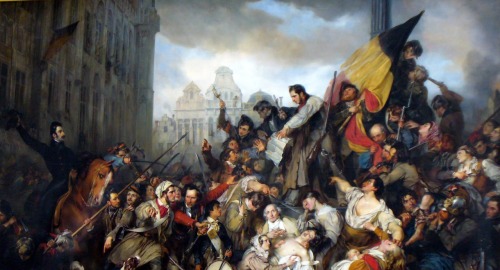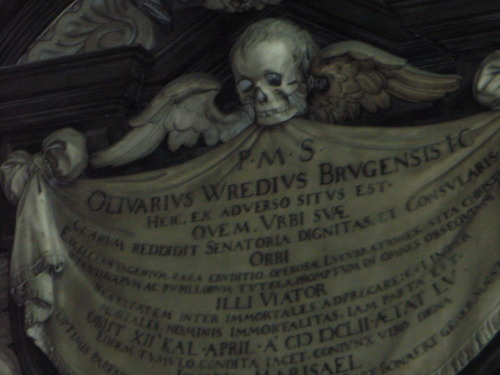
As we entered the Royal Museum of Fine Art, it was on the right wall. Not quite a mural, but big enough to be one in a smaller building, it illustrated in vivid colour and motion a grave struggle. On the left side, a general rides up, amid the chaos of yelling soldiers, a barking dog, a drummer boy, and women trying to aid the wounded. Somewhat above this, a man holds out a paper that is being refused by those to whom it is offered. And at the very top can be seen the Belgian flag, which although it had been torn in battle, is still being held up by the young standard-bearers.
This painting apparently illustrates an important point in the 19th century Belgian war for independence—an event upon which I am sadly uninformed. But despite my ignorance, as I studied this huge work of art I was struck by the patriotism and emotion that it portrayed, and I became mindful of the sort of feeling that Belgians must have when they see the black, yellow and red tricolor on the wind. Being from Texas, for me red, white and blue are the patriotic colours, whether for the state or for the country. And being from such a large country, I think Americans may sometimes forget that citizens of other nations are just as patriotic towards their own homelands as we are towards ours—perhaps we are just a little ethnocentric.
Episode of the September Days 1830 on the Grand Place of Brussels
Gustaf WAPPERS

 This past month I went down to “the valley” for a week–that is, the Rio Grande Valley of south Texas and northern Mexico. Most people on the Texas side are bilingual, and I was soon exposed to that interesting phenomenon known to some as “Spanglish.” Start a sentence in Spanish, switch to English in the middle, switch back to Spanish a few phrases later. It changed my perspective a little, since before that time, I always felt a bit discouraged when Spanish speakers talked to me in English–I guess I assumed they thought I couldn’t speak Spanish very well. But hearing how they talk to each other showed me that the language switching is something they just do out of habit.
This past month I went down to “the valley” for a week–that is, the Rio Grande Valley of south Texas and northern Mexico. Most people on the Texas side are bilingual, and I was soon exposed to that interesting phenomenon known to some as “Spanglish.” Start a sentence in Spanish, switch to English in the middle, switch back to Spanish a few phrases later. It changed my perspective a little, since before that time, I always felt a bit discouraged when Spanish speakers talked to me in English–I guess I assumed they thought I couldn’t speak Spanish very well. But hearing how they talk to each other showed me that the language switching is something they just do out of habit.